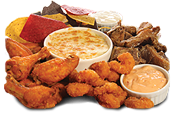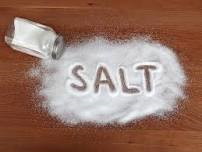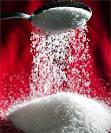Fats:
There are two kinds of fats: Good and Bad.
The good guys are unsaturated fats: monounsaturateds (MUFAs), found in foods like olive oil and avocados, and polyunsaturateds (PUFAs), found in sunflower and corn oils, among others, and in the omega-3s in salmon and walnuts. Both types the “good ” title because they’ve been shown to lower blood cholesterol and the risk for heart disease.
The villain, we’ve long been told, is saturated fat. The conventional wisdom, which dates to the 1950s, is that saturated fat, which is present in meat, dairy, and some plant products, increases our total cholesterol and chance for heart disease and stroke.
Bad Saturated Fats are: butter, milk fat, beef fat (tallow, suet) chicken fat, cream, pork fat (lard)stick margarine, shortening ,hydrogenated and partially hydrogenated oils, coconut oil, palm and palm kernel oils.
Trans fat, the staple fat that dominates packaged goods and fast food, is another very bad guy: It not only gooses up our LDL cholesterol but also lowers our HDL cholesterol (the kind that helps sweep bad cholesterol out of the body). The American Heart Association recommends limiting your intake of saturated fat to less than 7 percent of your total calories (if you eat 2,000 calories a day, that’s 16 grams, roughly the amount in a chocolate milk shake) and of trans fats to no more than two grams a day. Safest idea is to have NO trans fats per day.
What you can do immediately is swap animal fats for vegetable oils — for instance, using soybean oil or olive oil instead of butter because studies have shown these lower LDL cholesterol levels and disease risk. “Be careful not to replace saturated fats with refined carbs or your triglycerides can go up and your good HDL cholesterol can go down,” explains Alice H. Lichtenstein, the director of the Cardiovascular Nutrition Laboratory at Tufts University. High triglycerides and low HDL are risk factors for cardiovascular disease and criteria of metabolic syndrome, a cluster of health problems linked to heart disease and diabetes.
Salt:
Across the world, the excessive consumption of sodium–hiding in breads, soups and snack foods and beckoning from salt shakers everywhere–is the cause of some 1.65 million deaths by heart disease and strokes yearly, including roughly 667,000 “premature” deaths–those before the age of 70–says a comprehensive new study.[1]
The Centers for Disease Control and Prevention state: “We all need a small amount (e.g., between about 180 mg and 500 mg per day) of sodium to keep our bodies working properly. But the average daily sodium intake for Americans age 2 years and older is 3,436 mg.”
High sodium consumption raises blood pressure and high blood pressure is a major risk factor for heart disease and stroke, the nation’s first and third leading causes of death, respectively.
Research shows when salt intake is reduced, blood pressure begins decreasing for most people within a few days to weeks. Populations who consume diets low in salt do not experience the increase in blood pressure with age that is seen in most Western countries.
You can reduce your sodium intake if you:
1. Cook at home from scratch and reduce the amount of salt you add to dishes.
2. Check labels for sodium in all its forms. Table salt is mainly sodium chloride, but canned or packaged foods can contain other forms of sodium.
3. In the kitchen and at the dinner table, substitute spices, herbs, and salt-free blends for salt.
4. When you do opt for packaged foods, choose products that are sodium free or low in sodium. A typical cup of miso soup, for instance, contains 700 to 900 milligrams of sodium, so look for canned soups with “low sodium” or “reduced sodium” on the label. Bread and cereals carry loads of sodium. Buy the lowest sodium kind you can find and avoid white flour brands.
5. Watch out for salad dressings, ready- made pasta sauces, cup-o-soup products, canned vegetables, frozen pizzas, sausages, pepperoni, canned tuna, and pretty much any food that requires preservation or shelf life.
6. In a restaurant, ask your waiter which dishes are the lowest in sodium and ask of the chef can prepare yours without adding salt.
The overall best approach is to scan the ingredient list before eating or drinking anything. Any ingredient with “sodium” or “Na” — the chemical name for sodium — in its name contains the substance. Sodium might also be labeled as baking soda, baking powder, monosodium glutamate (MSG), disodium phosphate or salt.
Sugar
Astonishingly, Americans consume an estimated 130 pounds of added sugar per capita annually. That’s about 22 teaspoons daily for adults; roughly 32 teaspoons children (almost three-fourths of a cup). Topping the added-sugar intake list are soft drinks, accounting for 33 percent of added sugar consumed daily.
Overconsumption of added sugar and high-glycemic carbohydrates (like those found in breads, pizza, cold cereals and other baked goods) has been linked to obesity, diabetes and cardiovascular disease.
One of the most effective things you can do to improve your health is to cut back radically on sugar consumption; in particular, avoid sugared beverages entirely. If this seems overwhelming, taper off slowly – add slightly less sugar to your coffee or tea every day and start by drinking fewer soft drinks per week, etc. You will quickly discover that the craving for sugar dissipates. Foods that once seemed pleasantly sweet begin to taste sickly sweet .
Steer clear of artificial sweeteners – they have chemical components and adverse long term health consequences and the best solution is to choose natural sweeteners like organic raw sugar, maple syrup, or fruit sauces (apple or pear) and cut way back on quantity and portion size.
If you reduce your consumption of Bad saturated fats, salt and sugar you will be on your way to a healthier body, a leaner frame, more energy and you will reduce your risk for heart disease, stroke, obesity and diabetes.
[1] conducted by an international team led by Dr. Dariush Mozaffarian of Harvard University’s School of Public Health, was published Aug. 13, 2014 in the New England Journal of Medicine.



